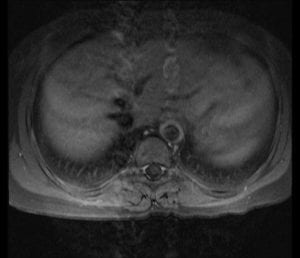“A steak saved my life,” writes columnist Damon Young, 41, in his article for GQ, as he shares the story of his diagnosis with Takayasu’s arteritis. After over-indulging at dinner, Damon felt a dull ache in his chest. Thinking it was a result of over-eating, he drove himself to the emergency room two days later.
But Damon’s life changed when he discovered an aortic aneurysm caused by Takayasu’s arteritis. Now, Damon advocates for patients and their families to understand their health conditions, especially during the time of COVID-19. Read his full column here.
What is Takayasu’s Arteritis?
Takayasu’s arteritis is considered an autoimmune disease. As a rare type of vasculitis, a group of disorders that cause blood vessel inflammation, Takayasu’s arteritis also causes harmful inflammation. However, this is specific to the aorta and its branches. As the aorta is a large artery which carries blood throughout your body, this inflammation can prevent blood from getting where it needs to be.

While doctors are unsure of the exact cause of inflammation, it is believed that the immune system is attacking its own arteries. Symptoms include fatigue, fever, and weight loss. Once the disease progresses, it can lead to narrow and blocked arteries, anemia, chest pain, vision issues, and a low pulse. According to the Mayo Clinic, this disease primarily affects individuals under the age of 40. The American College of Rheumatology also notes that approximately 90% of patients with Takayasu’s arteritis are biologically female.
Complications from the disease can include stroke, aortic aneurysms, and heart attacks. Therefore, if having symptoms, it is very important for patients to see the doctor. Additionally, patients can use medication to help control symptoms and prevent complications from occurring. Read more about Takayasu’s arteritis here.
Damon’s Story
The Onset
When Damon first arrived at the emergency room, after being treated, he was given a diagnosis of a strained pectoral muscle and a case of acid reflux. However, an emergency room doctor asked to run one more test. While Damon remained at the hospital for much longer than he thought he would, this test was crucial: it discovered his aortic aneurysm.
Doctors did not know how or why the aneurysm had appeared. In the month following his hospital discharge, Damon struggled to understand his condition. Cardiologists, gastrologists, and even his PCP couldn’t figure out what was happening.
Then Damon visited a rheumatologist who discovered something interesting. During tests, the rheumatologist found that Damon’s pulse was weak on the left side of his body, but strong on the right side. This was exactly what was needed to make a diagnosis. A mismatched pulse is a key indicator of Takayasu’s arteritis. After rheumatologists scoured Damon’s medical records, they also realized that he had most likely had this disease for a while. How did they know? Well, they could trace the aneurysm back about 10 years.
Now, Damon visits a specialist once per year. He also takes daily Lisinopril to manage his blood pressure.
Current Concerns
Despite his effective disease management, something has Damon concerned: the rapid spread of COVID-19 across the globe. He does acknowledge his disease, but sometimes feels as though he has to participate in self-deception: that he is healthier, younger, more agile. However, this is dangerous, especially when confronting a novel virus.
COVID-19 and Health
While many people want to live by the idea that “this won’t ever happen to me,” Damon says this simply isn’t true. Nobody knows how their body will react to a viral infection that they’ve never been exposed to before. He states:
“Most of us just don’t know exactly how healthy we are, and none of us—neither the “healthy” nor the immunocompromised—know how our immune systems will react to a virus it’s never seen.”
After all, it took over ten years to discover Damon’s aortic aneurysm. So, he questions:
How many [people] have asthma yet-to-be diagnosed or allergies yet-to-be discovered…a recent endoscopy or colonoscopy, and know exactly what’s lurking in their bowels…undetected and unaddressed aneurysms, which often remain painless until they rupture, and then excruciating until you die?
With coronavirus disproportionately affecting more men than women, according to a study published on The Lancet, people now have more questions than answers. Aren’t men less likely to visit the doctor? Why are people still going out to bars, sneaking to events, trying to go to the gym? Can we afford healthcare? Is it more risky to see a doctor or to stay home?
Ultimately, we don’t know how we will react to new stimuli or experiences, or how it might adversely affect our health in ways we never thought of before. Damon’s story is a reminder to be aware of your health and to seek help when experiencing symptoms, or if you feel like something is wrong. But in the time of COVID-19, it’s also a reminder to stay home so you can protect yourself and others.






